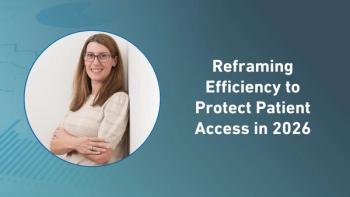
- Applied Clinical Trials-07-01-2012
- Volume 21
- Issue 7
Increasing Intensity of On-Site Monitoring a Troubling Trend
The percentage of source document verification coverage has been decreasing slightly over the past four years. Therefore, the amount of on-site time required by site monitors should also start decreasing.
SPOTLIGHT EVENT
Cambridge, MassachusettsDownload Brochure
RELATED
-
- Risk-Based Approach to Monitoring
- Has FDA Guidance on Risk-based Monitoring Impacted SDV Coverage Yet?More in Risk-Based Monitoring
In a recent blog, we presented data highlighting the trend in the percentage of source document verification coverage (i.e., percent of eCRF data targeted for SDV) and in particular observed that it has been decreasing slightly over the past four years, presumably related to early adoption of targeted, risk-based monitoring strategies. While the overall decrease has been relatively modest to-date, one might expect that the amount of on-site time required by site monitors should correspondingly start decreasing.
But this month';s Insights graph tells a different - and somewhat troubling - story. Using the Medidata Insights metrics warehouse- now comprising nearly 2,500 studies from 65 sponsor organizations - annual trends were computed and graphed of two critical monitoring efficiency metrics for Phase II/III studies:
- Monitoring on-site rate—the average number of on-site monitoring days per site per year
- SDV velocity—the average number of eCRF data points SDV'd per on-site day
The data shows that site monitors are spending increasingly more days on-site per year, and performing increasing amounts of SDV during each on-site day. This increasing burden—and cost—of site monitoring and SDV can be attributed to the increasing complexity of protocols observed in recent years. It is another reminder of the serious challenges facing clinical R&D organizations and the need to move more aggressively towards a targeted, risk-based monitoring paradigm.
Medidata is very interested to hear your take on these observed trends. Please also stay tuned as we continue to dig deeper into the Insights data through 2012.
Monitoring rates in Phase II-III trials, 2008-2011.
—Medidata Solutions, -
Articles in this issue
over 13 years ago
Managing Budgets in Complex Times with Tight Variancesover 13 years ago
Act coverover 13 years ago
Business and News Update July 2012over 13 years ago
Drug Information? Forget it!over 13 years ago
Supply Chain Managementover 13 years ago
Developing Quality Biosimilarsover 13 years ago
Drivers of Patient Interest in Referralover 13 years ago
Risk-Based Monitoring Risky for Sponsors?over 13 years ago
Fresh Doubts Cast Over Post-Marketing Trialsover 13 years ago
Health Reform Declared ConstitutionalNewsletter
Stay current in clinical research with Applied Clinical Trials, providing expert insights, regulatory updates, and practical strategies for successful clinical trial design and execution.




